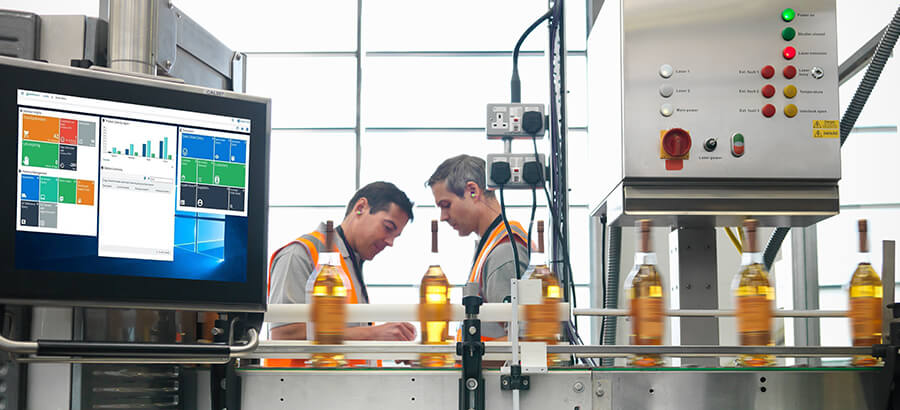Concepts like Industry 4.0 are rapidly transforming Canadian manufacturing, but the food and beverage sector has been slower to adapt to digitally enabled technology (Digital transformation). As traceability becomes mandatory for many food and beverage businesses, it’s time for manufacturers to examine their facilities to decide if they have the right processes and technology in place to handle the challenges they now face. For instance, you will likely find that investing in a digital Preventative Control Plan and traceability program is crucial due to the complexity of the food chain and food safety requirements. But automated systems and sensors can also help to improve inventory management systems, allowing you to better monitor supplier ingredients, warehouses, logistics, and retail points.
Tracking the movement of food and ingredients has always been a time-consuming task for the food and beverage industry, and it’s become increasingly difficult as food systems continue to globalize. A traceability plan is also an essential first step in building an effective recall plan. No manufacturer wants to consider that their products may be recalled for any reason, but when a recall happens it’s vital that it is conducted quickly and efficiently, both for public safety and for the reputation of the business.
Traceability from Farm to Fork
Additionally, Canadian food and beverage manufacturers are facing major changes to the way their products are regulated and inspected. The Safe Food for Canadians Regulations (SFCR) came into effect in January 2019, requiring that most processors of food and beverage products have both a working food safety Preventative Control Program based on the Hazard Analysis Critical Control Point (HACCP) Process in place, and a verifiable traceability system. This means they must be able to provide traceability evidence one step back and one step forward in their supply chain. They also need to provide traceability throughout their operations, from the ingredients used through to finished goods. The result of ensuring all food processors have this capability ultimately creates a traceability chain from Farm to Fork.
Unfortunately, many food and beverage operators are still unsure of where to start when it comes to creating a traceability system. Because the new regulations are “outcomes-based” rather than prescriptive, the Canadian Food Inspection Agency (CFIA) does not map out a “one-size-fits-all” traceability program to follow. That means manufacturers have the opportunity to create a customized system that fits holistically within their process, while adding value to other areas of their operations.
Improve Cost Control Methods
According to Agriculture and Agri-Food Canada, agriculture and food production contributes more than $111.9 billion to Canada’s total GDP. However, food and beverage makers face enormous pressures just to maintain their tight margins. At one end they are squeezed by retailers adjusting prices to suit cost-conscious consumers, and at the other, they must juggle high overheads and fluctuating costs of inputs like commodities and energy. As a result, Canadian manufacturers are increasingly focusing on better cost control methods, while relying on a much wider range of sources for their ingredients, both domestic and international.
Meanwhile, Canadian consumers are already driving changes to the food and beverage manufacturing process, demanding more transparency and convenient, technology-enabled access to information about food companies’ ingredients, business practices and values.
Harness the Power of Industry 4.0 and Machine Learning
Automating your data collection with machine learning processes and adding connectivity offers additional benefits, such as boosting overall efficiency and productivity, while cutting downtime for maintenance or equipment change-over. It can help reduce costs by streamlining the supply chain, minimizing loss and food waste throughout the process, and potentially shortening lead times for bringing new products to market.
Most importantly, these systems give food companies the valuable ability to capture, store and transfer data. If there is a recall – or an audit by the CFIA – data for the entire supply chain can be provided at the touch of a button. Ease of functionality and training also means that you’re no longer reliant on one employee to keep and understand your recall plan.
Manufacturers with automated processes are better able to create customized or short-run products for clients and can better manage their resources through just-in-time production. Connected systems can also ensure the company is operating at peak efficiency so that it is best positioned for growth when opportunities arise.







